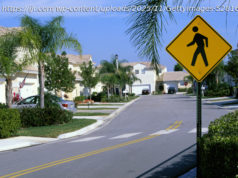The tremor came after a volcano violently erupted on Sunday, killing at least 38 people and injuring about 300, according to preliminary government figures.
EL RODEO, June 4 (Reuters) – Rescue workers struggled in perilous conditions to find bodies under rivers of ash and mud that swept down from Guatemala’s Fuego volcano on Monday, as the number of fatalities from an eruption that partially buried buildings rose to 38.
Structures and trees at the base of the Fuego volcano were completely coated in brown and gray. A policeman wearing a blue surgical mask stumbled in the muck as he ran from a cloud of ash pouring down the slope behind him, Reuters photos showed.
The eruption of Fuego – Spanish for “fire” – on Sunday was the biggest in more than four decades, forcing the closure of Guatemala’s main international airport and dumping ash on thousands of acres (hectares) of coffee farms on the volcano’s slopes.
Guatemala’s national disaster agency, CONRED, said the death toll was 38, up from an earlier 25, as more bodies were pulled from the ash around the village of El Rodeo, which was hard hit by the eruption.
More on the volcanic eruption:
Local news media reported more bodies had been found, though it was unclear whether more people died in a second eruption on Monday morning.
The task of pulling out bodies was halting, after the new eruption and an apparent landslide on the southern slopes of Fuego triggered fresh evacuations.
“They gave the emergency order to evacuate, and we all went running,” one rescue volunteer said on television. “We were pulling out bodies. We’re going to wait a half hour before entering again..”
A Reuters witness near the volcano said more people had been evacuated beyond a five-mile (8-km) perimeter from the site after the latest explosion.
Fuego, one of several active volcanoes out of 34 in the Central American country, is near the colonial city of Antigua, a UNESCO world heritage site that has survived several volcanic eruptions. The latest activity is mostly on the far side of the volcano, facing the Pacific coast.
Around 300 people have been injured since the eruption on Sunday that sent columns ash and smoke 6.2 miles (10 km) into the sky, dusting several regions with ash.
CONRED shared a photo showing the flows of gas and mud sweeping down a mountainside and across a broad valley, engulfing a small village.
“The landscape on the volcano is totally changed, everything is totally destroyed,” government volcanologist Gustavo Chigna said on local radio.
The agency also launched an online registry of missing people.
The eruption showered sand and ash on coffee plants across as much as 6,890 acres (2,788 hectares), including close to the volcano’s cone, causing an estimated loss of 0.91 percent of Guatemala’s coffee production, the country’s national coffee association said.
In some areas, rain rinsed ash off the leaves, and the full extent of the damage was not yet clear, the association said. (Reporting by Luis Echeverria, Sofia Menchu and Milton Castillo, Writing by Daina Beth Solomon; Editing by Frank Jack Daniel, David Gregorio and Jonathan Oatis)






